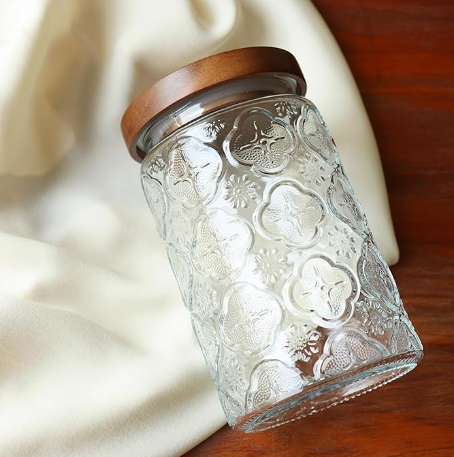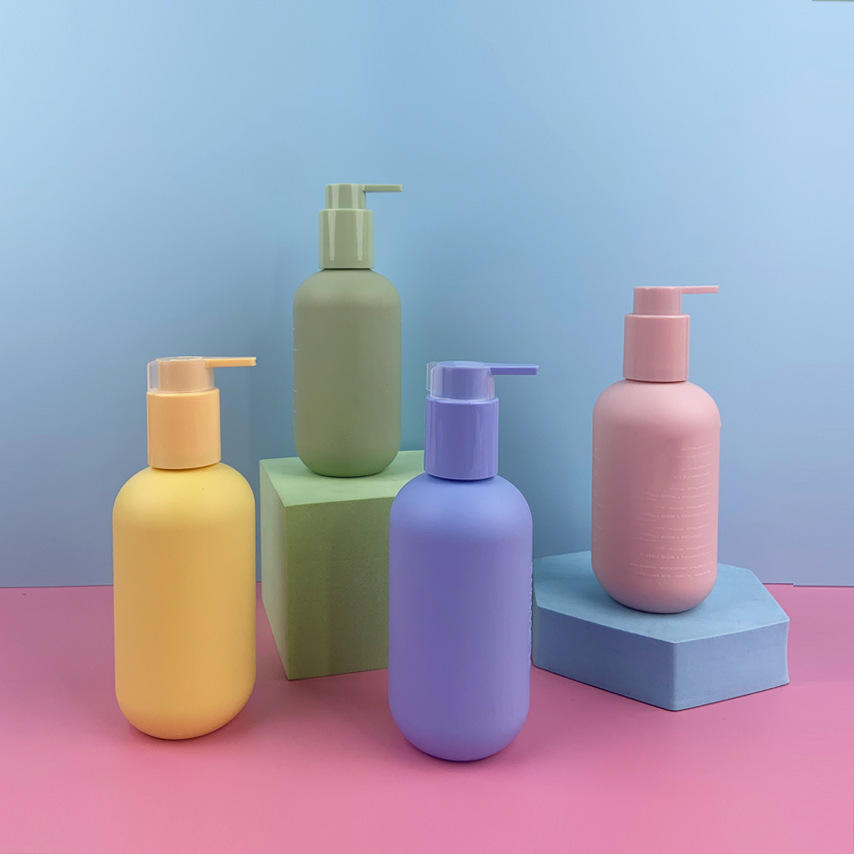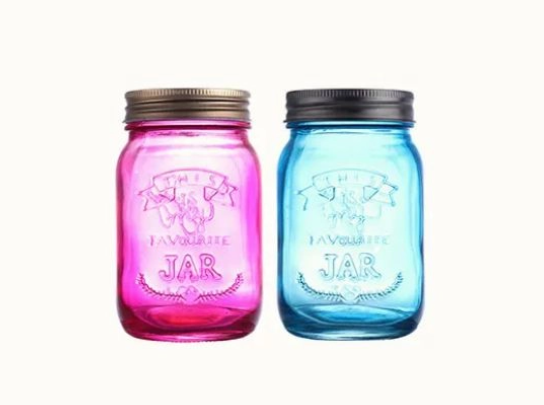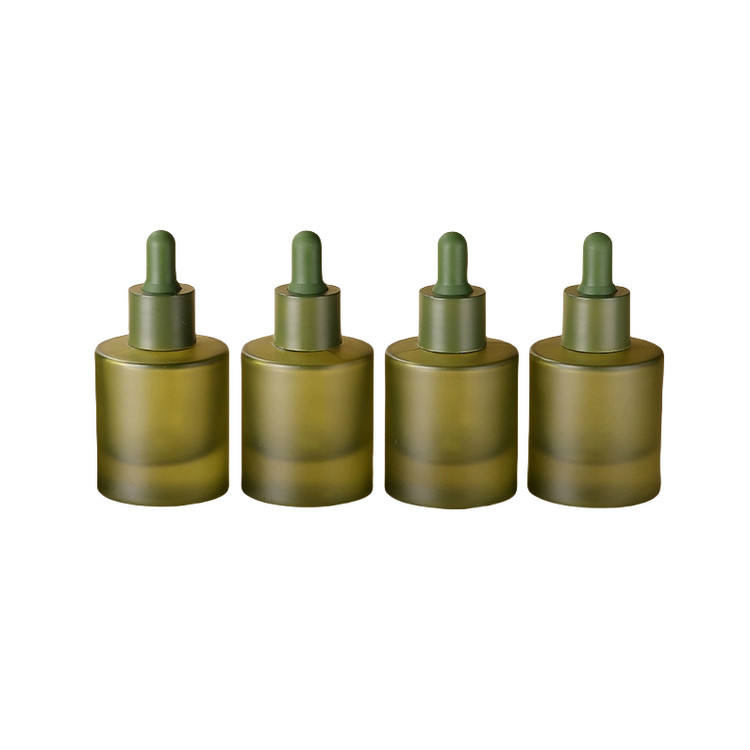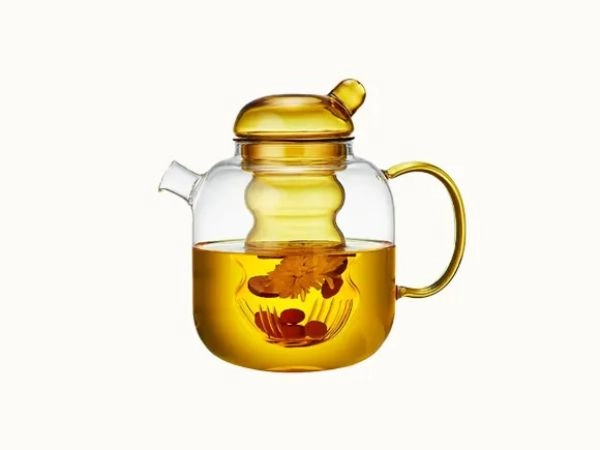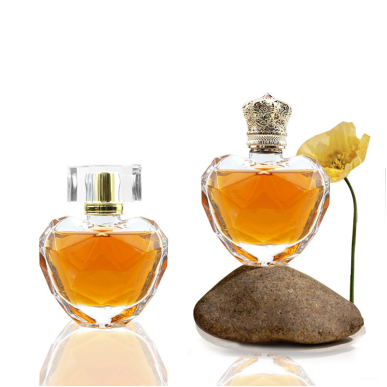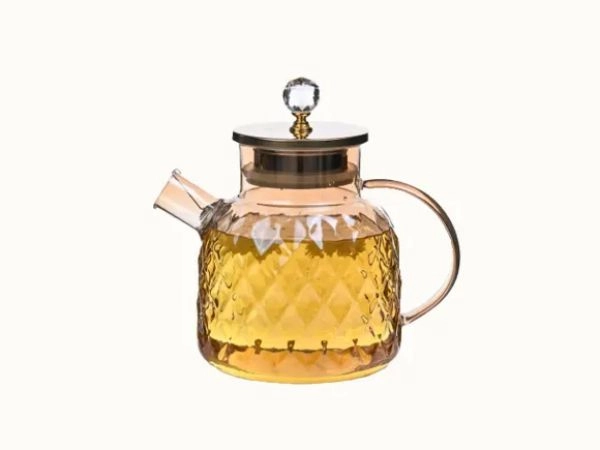Glass is a material that has fascinated humanity for thousands of years. Its unique properties—transparency, durability, chemical inertness—have made it indispensable in art, technology, and packaging. Whether you are a manufacturer, brand owner, or consumer, understanding glass’s nature, history, production, and applications is crucial for making informed decisions and appreciating its value.
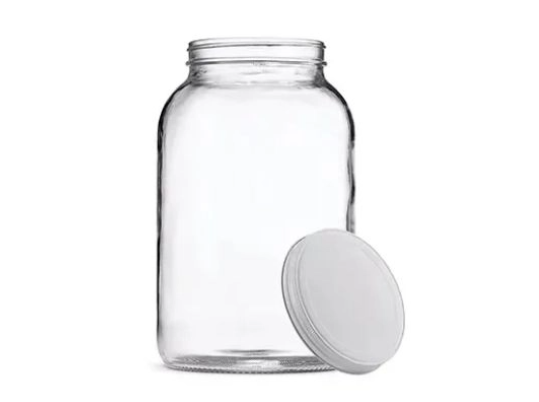

1. What Is Glass? Understanding the Basics
Glass is an amorphous solid, meaning its atoms are arranged without long-range order, unlike crystalline solids. This atomic structure gives glass its characteristic transparency and brittleness.
1.1 Composition of Glass
The primary ingredient in most commercial glass is silica (silicon dioxide, SiO₂), mainly sourced from sand. To make silica melt at achievable industrial temperatures, other substances are added:
-
Soda ash (sodium carbonate, Na₂CO₃):Lowers melting temperature.
-
Limestone (calcium carbonate, CaCO₃):Adds chemical durability.
-
Cullet (recycled glass):Reduces energy consumption during melting.
-
Other additives:Alumina, magnesium oxide, and metal oxides for color and specific properties.
-
What Gives Stained Glass Its Vibrant Colors?
Stained glass owes its vivid hues to the addition of various metal oxides during the molten stage of production. Each metal introduces a distinct color: copper compounds create rich greens and blues, while gold produces deep reds. Cobalt is prized for brilliant blues, and manganese often results in purple tones. By carefully selecting and blending these metallic additives, artisans achieve the captivating range of colors seen in stained glass windows and decorative panels.
The exact formulation varies depending on the glass type and application.
1.2 Physical and Chemical Properties
-
Transparency:Glass allows visible light to pass through, enabling its use in windows, containers, and optical devices.
-
Chemical Inertness:Glass does not react with most substances, preserving the integrity of contents.
-
Brittleness:Glass fractures under tensile stress but can be tempered or laminated to improve strength.
-
Thermal Resistance:Some glasses, like borosilicate, resist thermal shock and high temperatures.
-
Notable Glass Compositions in Patents
Over the years, glass patents have revealed fascinating advancements in both composition and performance. Early patents, like those for borosilicate glass (later known asPyrex), focused on combining silica with boron oxide to create glass that is exceptionally resistant to thermal shock and chemical attack. This composition became the gold standard for laboratory and kitchenware thanks to its ability to withstand sudden temperature changes and corrosive substances.
Modern patents have pushed the boundaries further. Take, for example, sodium aluminosilicate glass, which incorporates alumina and sodium oxide alongside silica. By engineering the surface through ionic exchange (swapping smaller sodium ions for larger potassium ions), this glass develops a compressive stress layer on the outside. The result? Significantly increased strength and scratch resistance—hallmarks of glass used in smartphone screens and other advanced applications.
These patented formulations demonstrate how careful adjustment of a glass’s ingredients and internal structure can dramatically influence its durability, resilience, and suitability for specialized uses.
1.3 Glass as a Non-Crystalline Solid
Unlike crystals, glass lacks a repeating atomic lattice. This gives it isotropic optical properties—light behaves uniformly in all directions—and contributes to its unique mechanical behavior.
Other Examples of Amorphous Solids
Glass isn’t unique in its amorphous structure—several other materials also display this “in-between” state, neither fully liquid nor truly crystalline solid. Notable examples include:
- Amorphous Ice:Rapidly cooled water can form amorphous ice, which lacks the ordered crystal lattice found in regular ice. This state is often encountered in outer space or laboratory settings, and it behaves differently from both standard ice and water.
- Amorphous Silicon:Used extensively in the production of thin-film solar cells and displays, amorphous silicon is valued for its optical and electronic properties, despite lacking the regular atomic structure of crystalline silicon.
- Certain Plastics:Many plastics, such as polystyrene and polycarbonate, are amorphous in nature. This lack of crystalline structure contributes to their transparency and ability to be easily molded.
- Gels and Thin Films:Some gels and thin films, including everyday materials like window glass or gelatin desserts, also fall into the amorphous category, exemplifying how common these solids are across a range of industries and products.
Understanding these diverse examples highlights the versatility of amorphous solids in everyday life and technology alike.
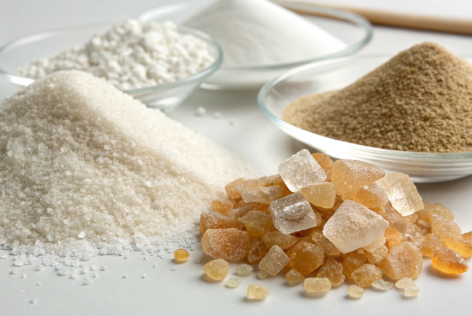
2. The History and Evolution of Glass
Glassmaking is one of humanity’s oldest crafts, with origins tracing back over 4,000 years.
2.1 Early Glassmaking in Ancient Civilizations
-
Mesopotamia and Egypt (~3500 BCE):The earliest glass artifacts were beads and small decorative objects made by core-forming techniques.
-
Glass was a luxury item, symbolizing wealth and status.
-
Techniques and recipes were closely guarded secrets.
2.2 The Roman Revolution: Glassblowing
-
Invented around the 1st century BCE, glassblowing allowed rapid shaping of hollow vessels.
-
This innovation democratized glass, making it affordable and widespread.
-
Roman glassware included bottles, cups, windows, and decorative pieces.
2.3 Medieval and Renaissance Advances
-
Byzantine and Islamic glassmakers refined decorative techniques, including enamel painting and gilding.
-
Venetian glassmakers on Murano Island pioneered crystal-clear glass and intricate artistry.
-
These advancements influenced glass production worldwide.
2.4 Industrial Revolution and Modern Glassmaking
-
Mechanized production enabled mass manufacturing of uniform glass bottles and containers.
-
Innovations in glass chemistry and machinery improved quality and reduced costs.
-
Today, glass is integral to packaging, construction, electronics, and art.
Glass in Modern Architecture and Design
Glass is fundamental to contemporary architecture, transforming how we experience interior and exterior spaces. Today’s offices, schools, and even private residences often incorporate expansive glass façades, creating buildings that feel open, filled with natural light, and visually connected to their surroundings.
Advancements in glass technology—like toughened and laminated panels—enable architects to design entire walls, floors, and even staircases from glass, without sacrificing strength or safety. This versatility means shopfronts can feature sweeping, seamless windows to showcase products, while high-rises use glass curtain walls to create iconic skylines.
Architectural glass also serves functional purposes: modern coatings can boost energy efficiency, reduce glare, and increase privacy, making glass not only an aesthetic choice but a practical one as well. Through these innovations, glass has redefined the boundaries of design, enabling creativity and sustainability in structures worldwide.
How Flat Glass for Windows Is Made
For modern windows, flat sheets of glass are typically produced using the float glass process—a method that transformed the industry in the 20th century. Here’s how it works:
- Molten glass is preparedby melting a blend of silica sand, soda ash, limestone, and other additives at extremely high temperatures.
- The liquid glass is then gently poured onto a bath of molten tin.Because glass and tin don’t mix, the glass spreads out evenly and “floats” atop the tin surface.
- As the glass floats, gravity and surface tension help it form a perfectly flat, uniform surface—ideal for clear, distortion-free windows.
- Careful cooling, or annealing, follows.The continuous ribbon of glass moves through a controlled environment, gradually solidifying while avoiding stress and cracks.
- Finally, the solidified glass ribbon is cut to the desired sizes and prepared for usein residential, commercial, or automotive applications.
This ingenious method creates flawless panes, giving rise to the ubiquitous, crystal-clear windows we rely on every day—whether in the sleek exteriors of skyscrapers or the comfort of a home.

3. Types of Glass and Their Applications
Glass types vary widely based on composition and intended use.
3.1 Soda-Lime Glass
-
Constitutes about 90% of manufactured glass.
-
Used for windows, bottles, jars, and tableware.
-
Affordable and recyclable.
3.2 Borosilicate Glass
-
Contains boron oxide for enhanced thermal and chemical resistance.
-
Used in laboratory glassware, cookware, and lighting.
3.3 Lead Glass (Crystal)
-
Contains lead oxide, increasing refractive index and brilliance.
-
Used for luxury glassware and decorative items.
3.4 Specialty Glasses
-
Tempered glass: Heat-treated for strength and safety.
-
Laminated glass: Layers bonded for impact resistance.
-
Coated glass: Surfaces treated for anti-reflective or self-cleaning properties.
3.5 Ultra-Thin and Flexible Glass
Emerging at the cutting edge of materials science, ultra-thin and flexible glass—such asCorning’sWillow Glass—ushers in a new era for next-generation electronic displays.
- Extreme Thinness and Flexibility:Sheets as thin as a sheet of paper can bend and flex without cracking, opening possibilities for curved or even rollable screens.
- Durability:Despite its slender profile, this glass retains chemical durability and scratch resistance, making it suitable for touchscreens and portable electronics.
- Optical Clarity:Maintains high transparency and minimal distortion—crucial for display quality in smartphones, wearables, and flexible displays.
Potential applications include lightweight, flexible smartphones, tablets that roll up for storage, innovative wearable devices, and even new types of solar panels. As manufacturing processes evolve, we may soon see displays that seamlessly conform to curved surfaces or integrate invisibly into everyday objects.
3.6 Unusual and Specialized Uses of Glass
While most of us encounter glass daily in familiar forms—windows, bottles, cookware—its versatility extends into some truly remarkable and unexpected arenas.
Glass in Nuclear Waste Disposal
One of the most critical uses for glass lies far from the breakfast table: safely managing hazardous waste. Through a process known as vitrification, dangerous materials like radioactive nuclear waste are immobilized by incorporating them into molten glass. Once cooled, the resulting solid glass locks in contaminants, greatly reducing the risk of leakage or environmental exposure. This technique is an essential part of waste management at former nuclear processing sites—turning a hazardous byproduct into a stable, durable material stored securely for decades or even centuries.
Architectural Marvels and Reinforcement
Glass has left its delicate, decorative image far behind in modern architecture. Advances in tempering, lamination, and engineering have transformed glass into a robust structural material. Today, it’s common to see entire building façades, floors, staircases, and even roofs constructed from toughened or laminated glass. These innovations allow natural light to flood interior spaces, such as the soaring glass walls of theWayfarers ChapelinCalifornia. In urban infrastructure, recycled glass finds new life, blended with asphalt for more reflective and durable roads, or integrated as tiny beads in highway markings to enhance nighttime visibility.
Protective and Functional Applications
From bank teller windows to safety barriers, specialty glass combines clarity with high-strength performance. Bullet-resistant glass pairs layers of glass and polymers to absorb and dissipate kinetic energy from impacts—all while remaining transparent. In security-sensitive environments, such as banks or government buildings, this robust glazing ensures both protection and visibility.
These examples underscore that glass is far more than a transparent barrier; it’s a material continually engineered for new challenges—whether containing nuclear byproducts or shaping the skylines of our cities.

4. The Manufacturing Process of Glass Bottles
Understanding how glass bottles are made helps appreciate their quality and design.
4.1 Raw Material Preparation
-
Silica sand, soda ash, limestone, and cullet are precisely measured and mixed.
-
The batch is ground to ensure uniform melting.
4.2 Melting
-
The batch is melted in furnaces at ~1500°C.
-
Continuous tank furnaces allow large-scale production.
4.3 Forming Techniques
-
Blow and Blow:Molten glass is blown into a parison, then into a mold.
-
Press and Blow:Glass is pressed into a parison before blowing, used for wide-mouth jars.
-
Other Methods:Drawing and casting for specialty shapes.
4.4 Annealing
-
Bottles are slowly cooled in annealing lehrs to relieve internal stresses.
-
This prevents cracking and improves durability.
4.5 Decoration and Finishing
-
Printing, labeling, coating, and embossing enhance aesthetics and branding.
-
Quality control ensures consistency and defect-free products.
Challenges in Glass Manufacturing: Balancing Recipe and Chemistry
While the magic of glassmaking might conjure images of alchemists and blazing furnaces, the process isn’t without its quirks and pitfalls. One of the main challenges lies in getting the ingredients—and their proportions—just right.
For example, while soda ash (sodium carbonate) is added to the mix to lower the melting point of silica sand (and make manufacturing more energy-efficient), this modification introduces a new issue: the resulting glass becomes water-soluble. Clearly, no one wants bottles or windows that disappear in a rainstorm. To solve this, limestone (calcium carbonate) finds its place in the recipe. Limestone effectively stabilizes the glass, preventing it from dissolving when exposed to water.
In essence, every additive has its purpose but also its trade-offs. The absence or imbalance of these vital components can produce glass that’s too brittle, unstable, or vulnerable to the elements. Careful control over raw materials and their interplay is not only a testament to human ingenuity but a necessity for creating functional, durable glass products.
5. Why Choose Glass Bottles for Packaging?
Glass bottles remain the gold standard for many products due to their unmatched properties.
5.1 Chemical Inertness and Safety
Glass does not interact with contents, preserving flavor, aroma, and safety, making it ideal for food, beverages, cosmetics, and pharmaceuticals.
5.2 Barrier Properties
Glass provides an excellent barrier against oxygen, moisture, and contaminants, extending shelf life.
5.3 Sustainability
Glass is infinitely recyclable without quality loss, supporting circular economy initiatives.
5.4 Brand Perception and Aesthetics
Glass conveys premium quality, luxury, and trustworthiness, enhancing consumer appeal.
6. Paupacking’s Glass Bottles: Excellence in Packaging
Paupackingoffers an extensive range of customizableGlass Bottlesthat combine traditional craftsmanship with modern innovation.
-
Multiple shapes, sizes, and colors.
-
Eco-friendly materials and processes.
-
Custom decoration and labeling services.
-
Reliable global logistics and customer support.
7. Caring for Your Glass Bottles
Proper care ensures longevity and maintains appearance.
-
Clean with warm water and mild soap; avoid abrasives.
-
Store away from direct sunlight to prevent discoloration.
-
Handle carefully to avoid chips and cracks.
-
Use appropriate labels and closures to protect contents.
8. Innovations and Trends in Glass Packaging
-
Lightweight glass reduces shipping costs and environmental impact.
-
Increased use of recycled glass content.
-
Smart packaging with QR codes and interactive labels.
-
Custom shapes and finishes for brand differentiation.
-
Sustainable closures such as bamboo and cork.
9. Table: Glass Bottle Types and Characteristics
| Bottle Type | Material | Features | Common Uses | Advantages |
|---|---|---|---|---|
| Clear Glass Bottle | Soda-lime glass | Transparent, glossy | Beverages, cosmetics | Showcases product color |
| Amber Glass Bottle | Colored glass | UV protection | Essential oils, pharmaceuticals | Protects light-sensitive contents |
| Frosted Glass Bottle | Coated glass | Matte finish | Luxury cosmetics, perfumes | Elegant look, diffused light |
| Colored Glass Bottle | Various pigments | Decorative, UV protection | Specialty beverages | Brand differentiation |
10. Conclusion
Glass is a timeless, versatile material that blends beauty with function. Its rich history and advanced manufacturing techniques make it an ideal choice for packaging diverse products.Paupacking’s premiumGlass Bottlesembody this legacy, offering brands sustainable, elegant, and high-quality packaging solutions.
Explore Paupacking’s collection today to elevate your packaging with expertly crafted glass bottles that stand the test of time.




